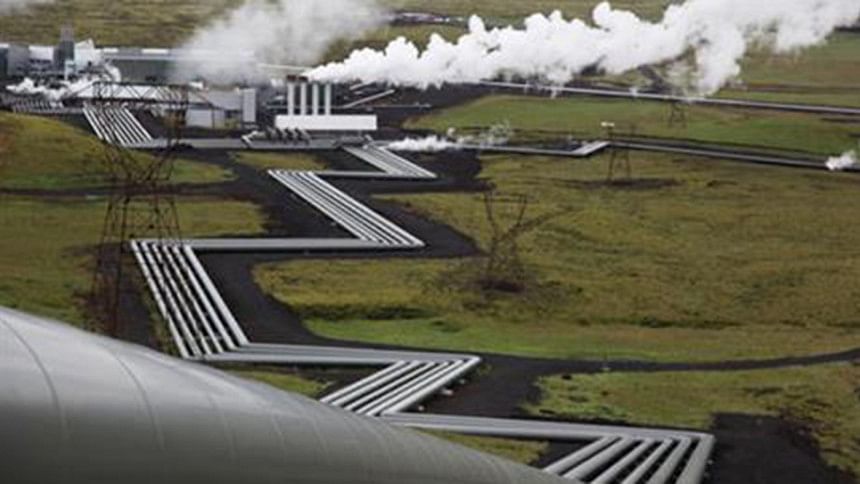Scientists turn chief global warming gas into harmless stone

Scientists have a found a quick way — but not a cheap one — to turn heat-trapping carbon dioxide gas into harmless rock.
Experts say the results of a two-year, $10 million experiment called CarbFix , conducted about one-third of a mile (540 meters) deep in the rocks of Iceland, offer new hope for an effective weapon to help fight man-made global warming.
When an international team of scientists pumped a carbon dioxide and water mix into underground basalt rocks, basic chemistry took over. The acidic mixture dissolved the rocks' calcium magnesium and formed limestone, a permanent natural jail for the heat-trapping gas, according to Juerg Matter of the University of Southampton in England. He is the lead author of a study detailing the experiment published Thursday in the journal Science.
"It's no longer a gas," Matter said. "Basically carbon dioxide is converted into stone."
Scientists, who had done this before in the lab, thought the process could take thousands or even hundreds of thousands of years. But after just two years, 95 percent of the gas was captured and converted, the study said.
"It's what we hoped for ... and in some ways better," said David Goldberg, a Columbia University geophysicist who wasn't part of the team but praised it. "What's going on here is a natural process being accelerated."
One of the methods to battle climate change, in addition to reducing fossil fuel emissions, is to capture carbon dioxide from the air or power plants.
"Carbon capture is not the silver bullet, but it can contribute significantly to reducing carbon dioxide emissions," Matter said.
However, carbon capture however can be expensive — especially the capturing part. Once the gas is grabbed from the air, storing it is another issue. It can be stored underground and is sometimes injected in depleted oil wells, but there are concerns about monitoring it and preventing it from escaping.
Injecting it into basalt and letting nature take its course can solve that problem. But at $17 per ton of carbon dioxide, it can cost a couple times more than injecting it into old wells, Matter said.
There's basalt all over the world, in places like the Pacific Northwest, India and South America, Matter said.
But even more promising is the ocean floor, which is full of basalt and a good place to store the carbon dioxide, Goldberg said.
CarbFix is just a small scale test — using about the equivalent of the annual carbon dioxide emissions of 15 Americans — but if it can be scaled up at a low cost, "it would be very good news," said climate scientist Ken Caldeira of the Carnegie Institution for Science, who wasn't part of the study.

 For all latest news, follow The Daily Star's Google News channel.
For all latest news, follow The Daily Star's Google News channel. 








Comments